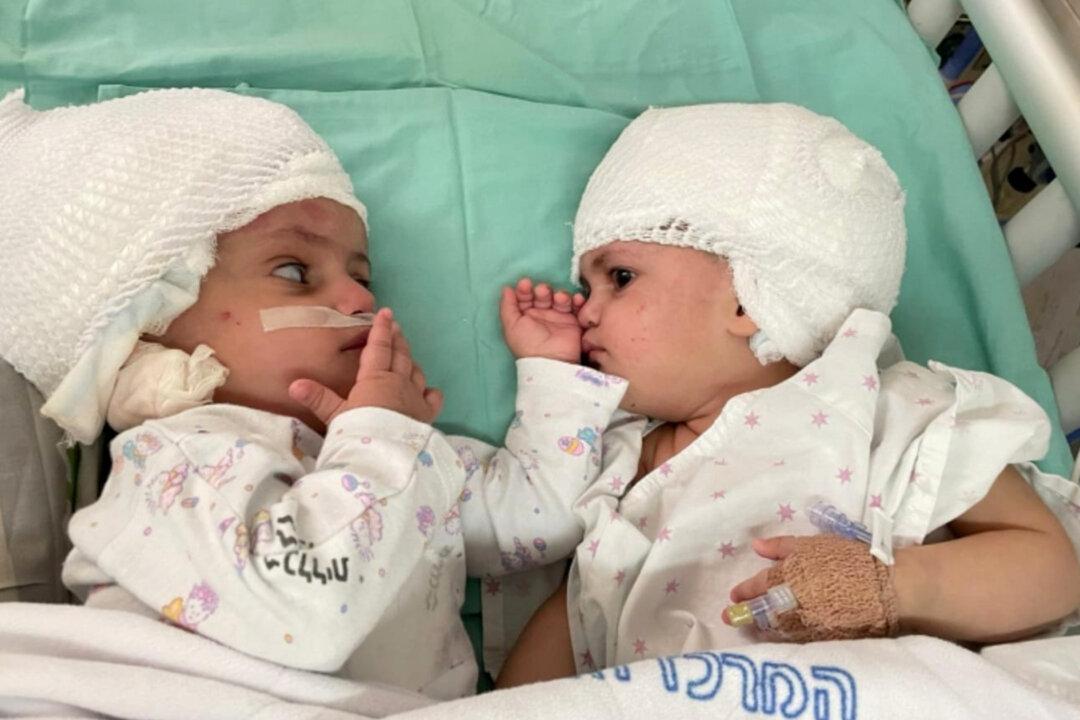One-year-old twin girls who were born conjoined at the back of the head can now make eye contact with each other for the first time after undergoing a rare separation surgery in Israel.
The more than 12-hour operation that took place at Soroka Medical Centre in Beersheba on Sept. 2 took months of preparation and involved dozens of experts from Israel and abroad, the hospital said on Sept. 5.






